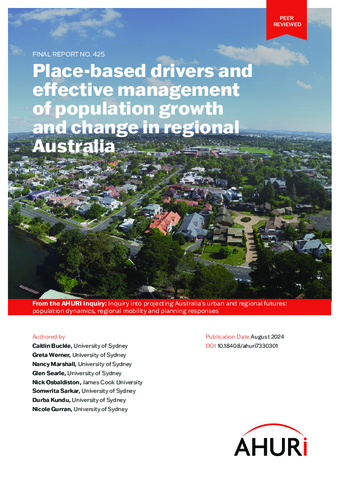This study examines the place-based factors (i.e. that may be specific to a place) that influence people moving to and from Australian regional and rural areas and considers policy solutions for managing the impacts of this change.
People moving to regional cities and towns favour being close to the coast and having easy access to larger cities while also having a warmer and wetter climate. New AHURI research examines the place-based factors (i.e. that may be specific to a place) that influence people moving to and from Australian regional areas and considers policy solutions for managing the impacts of these changes.
Growth is positively related to connectivity, such as by being close to major railways, roads, airports and larger cities and employment centres. Internet connection speeds may also be a factor in migration to certain non-metropolitan areas, with technological advancements and favourable economic conditions enabling former city dwellers to telecommute from smaller regional locations. Access to hospitals and available health infrastructure can be significant considerations for people considering moving to a regional city.
A key challenge in regional areas is that for vacancies in key employment sectors, local residents may not have requisite skills and attracting key workers from city locations can be challenging as housing challenges, reduced services (i.e. childcare) and other factors of liveability, and lack of job opportunities for a spouse, can be a disincentive.
The liveability of each regional location is very important in creating a healthy and ‘deep’ population, i.e. one that stays and thrives in the region. Overcoming blockages to liveability, such as childcare; housing needs and supply; and transport infrastructure, as well as increasing local education and training opportunities for local workers, requires creative solutions.

